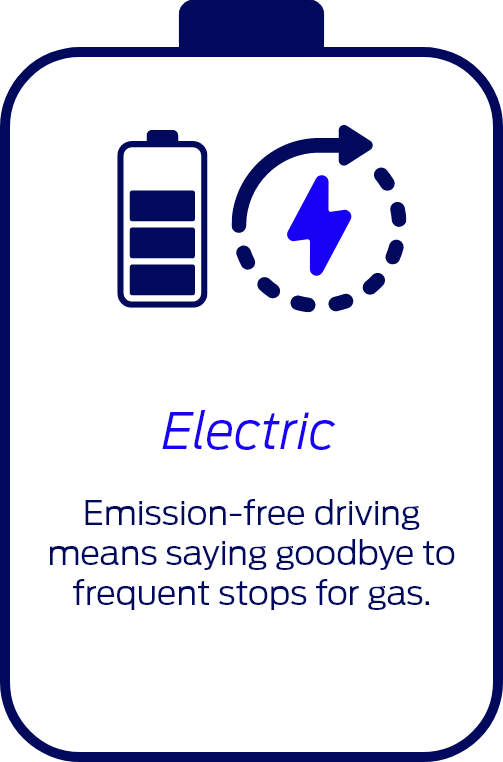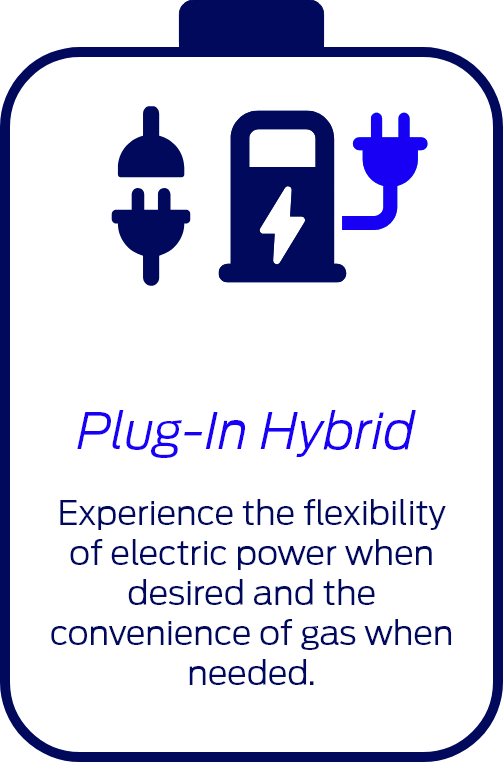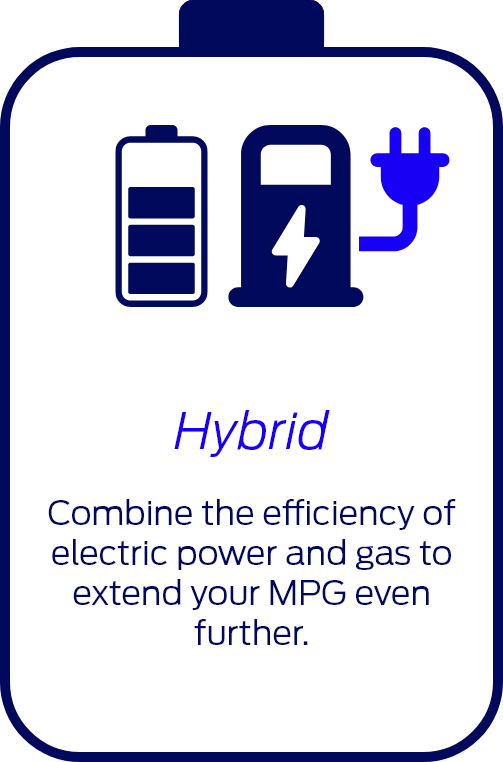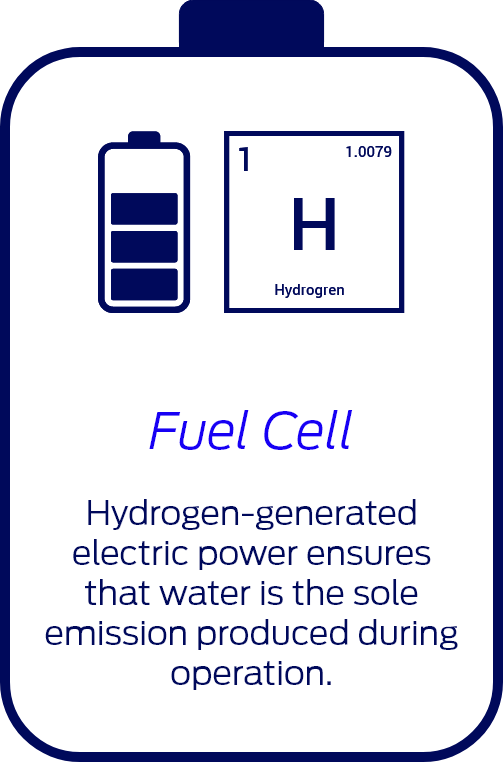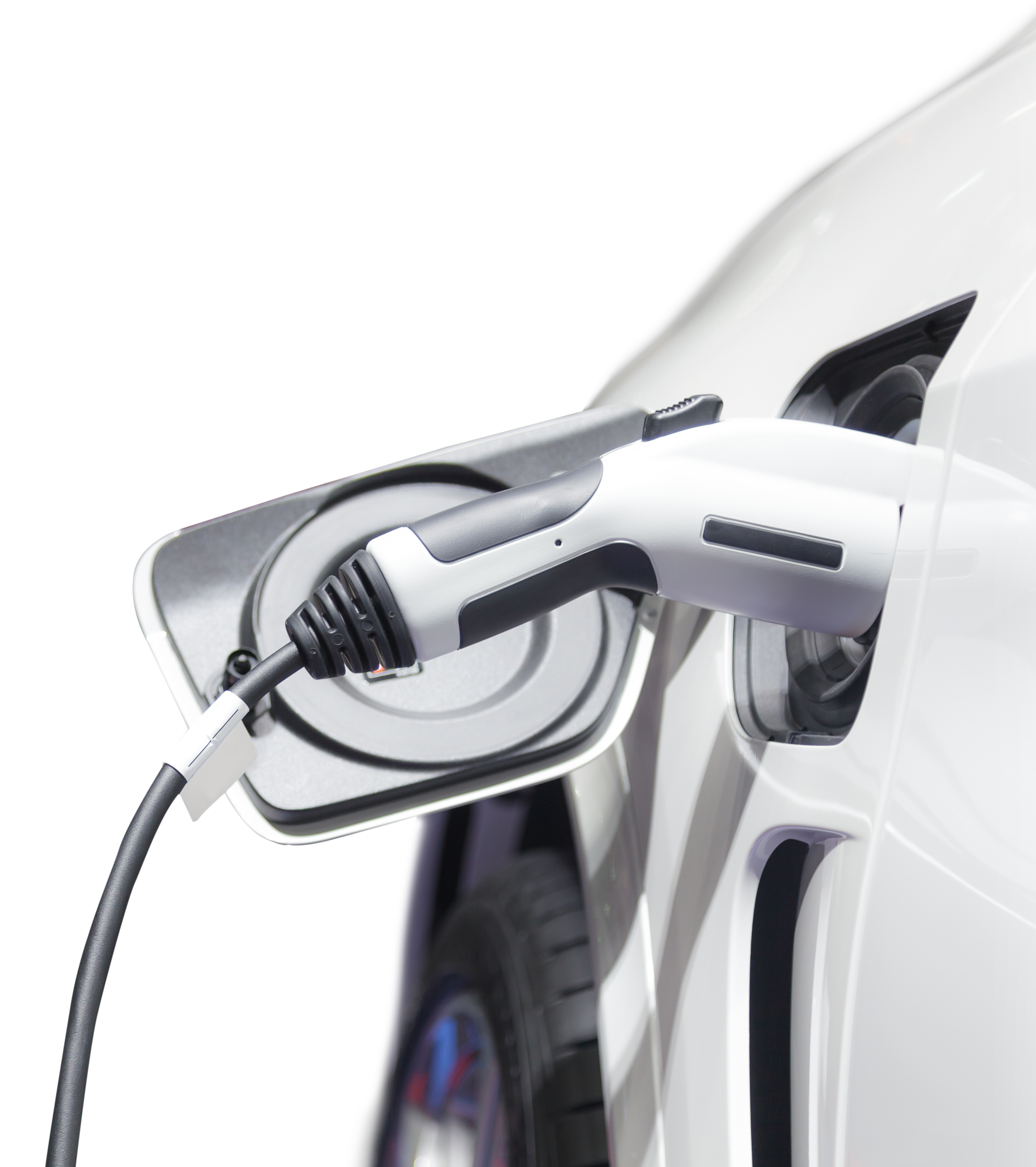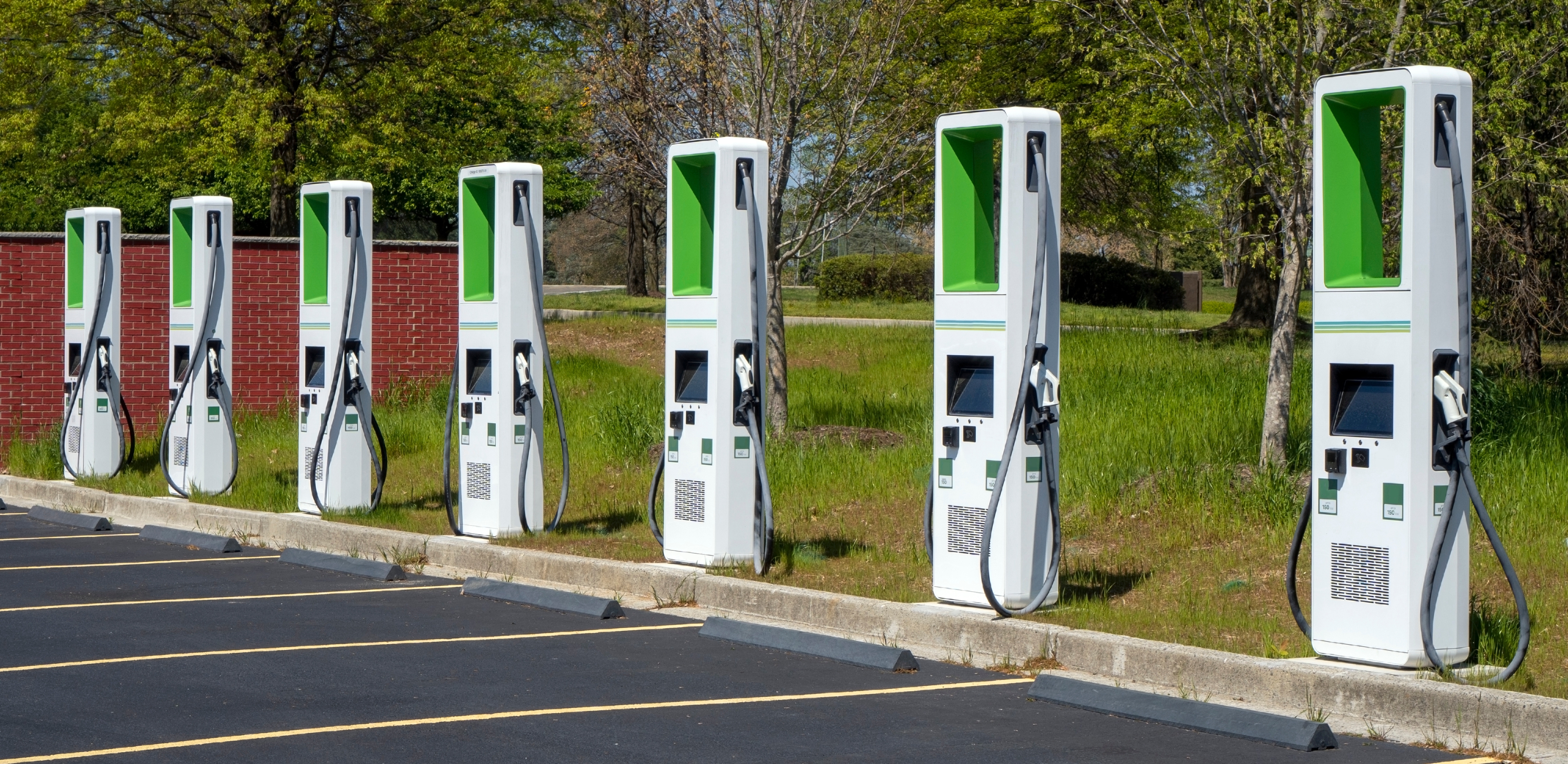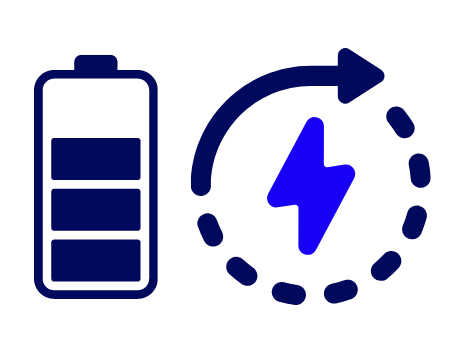
Electric
An electric automobile (EV) comes equipped with a substantial battery and a robust electric propulsion system, enabling it to attain remarkable distance coverage and performance, all without depending on a conventional gasoline tank or an internal combustion engine. Embracing the shift towards fully electric vehicles can result in substantial reductions in carbon dioxide (CO2) emissions and a reduction in our ecological impact. Remarkably, these electric vehicles release absolutely no emissions from their tailpipes, rendering them a planet-friendly option for a more environmentally conscious and sustainable future.
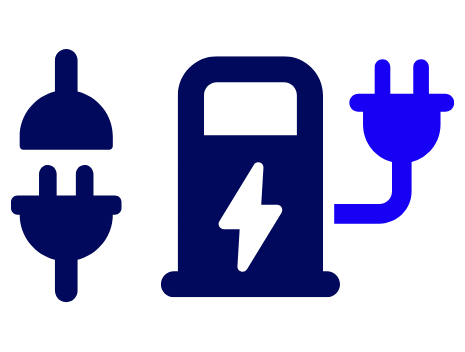
Plug In Hybrid
A plug-in hybrid vehicle (PHEV) represents a hybrid automobile that operates primarily on gasoline but incorporates a notably expanded battery that can be replenished using an external energy source. When the battery attains full charge, the PHEV operates in a manner akin to an electric vehicle, relying exclusively on electric power until the battery's energy is exhausted. Subsequently, the internal combustion engine engages to continue propulsion. Furthermore, the PHEV employs regenerative braking technology, an energy-saving feature that captures energy during braking and converts it back into electricity to recharge the battery.
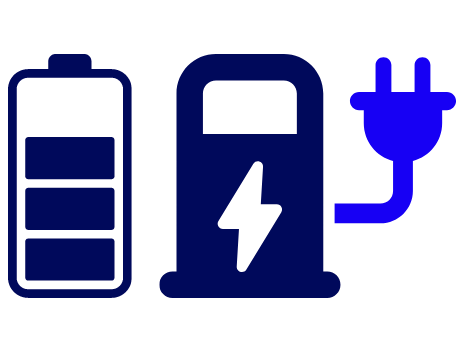
Hybrid
A hybrid automobile primarily relies on gasoline as its main source of power, but it integrates electric motors that cooperate with the gasoline engine to improve fuel efficiency. This collaboration allows hybrids to conserve fuel by leveraging the electric motors when suitable. Additionally, they utilize regenerative braking technology to capture and store energy during braking, which is then employed to assist in acceleration when the vehicle halts completely, further enhancing fuel economy.
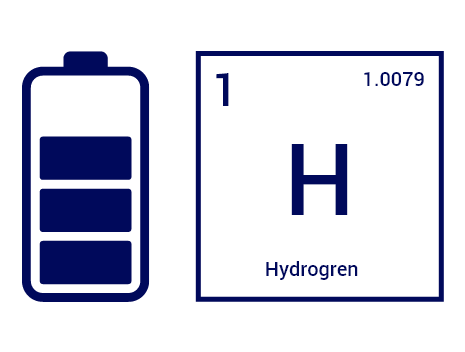
Fuel Cell
Much like fully electric vehicles, fuel cell vehicles employ electricity to power an electric motor. The key difference lies in their method of electricity generation. Fuel cell electric vehicles (EVs) generate electricity by utilizing hydrogen, eliminating the sole dependence on a battery. This pioneering approach leads to a genuine zero-emission vehicle, as the sole byproduct of this electricity production process is water, positioning fuel cell EVs as a more environmentally conscious and eco-friendly alternative.

Federal Tax Credit
Up to $7,500 federal rebate. Additional State Incentives may apply.

Local Savings
Numerous state, local utilities, and other entities provide supplementary incentives.

Low Maintenance
Electric vehicles (EVs) generally require less frequent maintenance and repairs compared to traditional internal combustion engine vehicles. This means less time spent at the service shop and more time enjoying the open road.

Charge at Home
Charge your electric vehicle conveniently at home, work, or at one of the rapidly increasing public charging stations available.

Fun to Drive
Electric motors deliver seamless and instant torque, resulting in smooth and exhilarating acceleration, providing a fun driving experience.

Electric Mode
Electric motors deliver seamless and instant torque, resulting in smooth and exhilarating acceleration, providing a fun driving experience.

